The highest mountains in England may not reach the heights of those found in the Scottish Highlands, nor even the tallest peaks in Wales, yet their enduring popularity is testament to their beauty and grandeur.
The Scafells, Helvellyn, Bowfell, Great End – these are names to stir the soul of any adventurous type and their treasures are a delight for seasoned mountain goats and hillwalking newbies alike. Here is everything you need to know about the tallest mountains in England.
What’s the highest mountain in England?
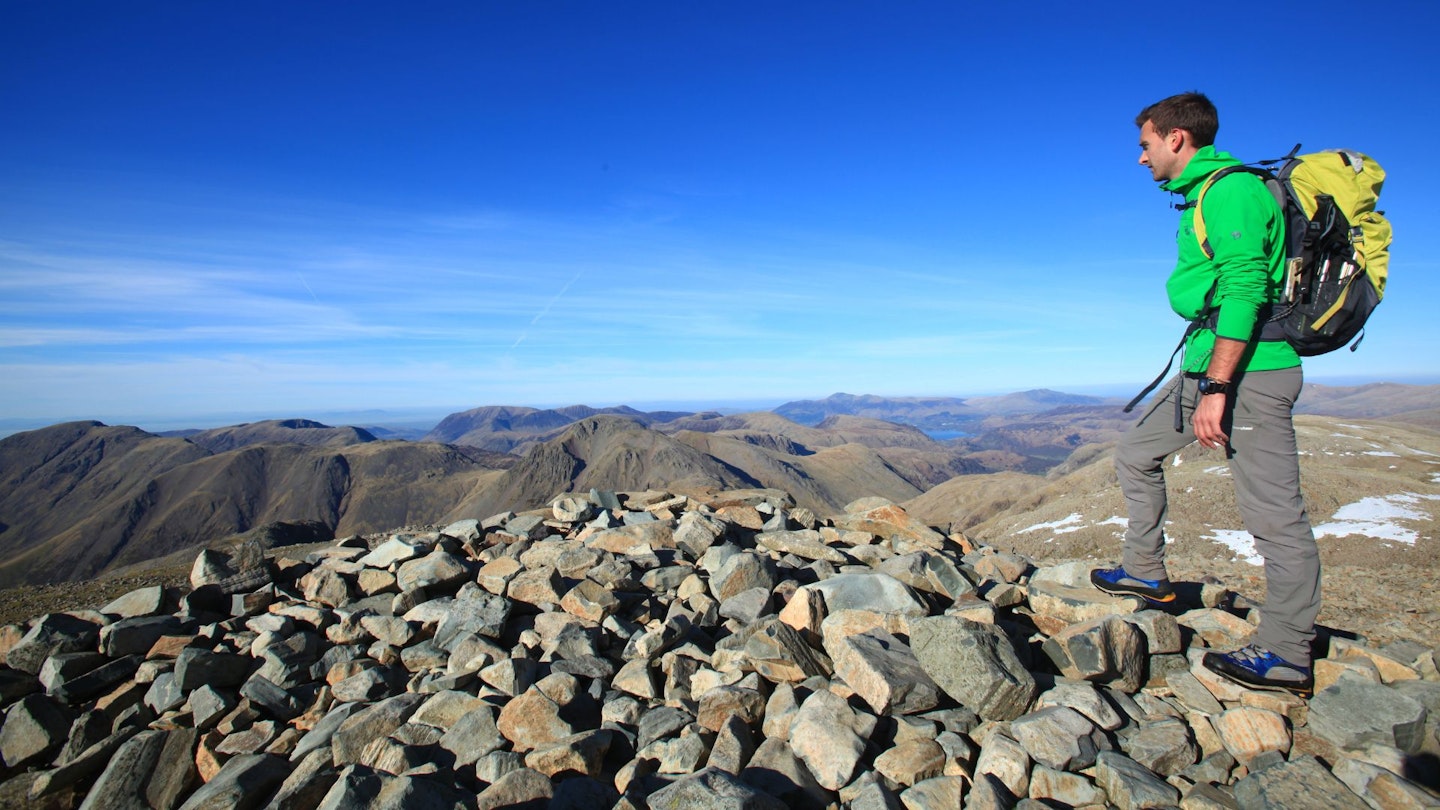
The highest mountain in England is Scafell Pike, the 978m (3,209ft) high point of the rugged and spectacular Scafell range in the Lake District’s southern fells.
Before we go any further, a word on pronunciation – Scafell is pronounced skaw-fell rather than ska-fell – these things are important, you know!
By Lake District standards, the mountain is relatively remote, requiring a long hike regardless of start point. However, this doesn’t stop around 250,000 plucky souls attempting to reach its summit every year, perhaps making it England’s second most popular mountain, behind the more accessible Helvellyn.
Do you fancy it? Here are details of the most popular ways to climb Scafell Pike, the highest mountain in England.
How to climb the tallest peak in England

As mentioned, any hike to Scafell Pike is long and strenuous. However, the main routes are not technically difficult, making them achievable for any reasonably fit hiker.
The mountain is usually climbed from one of four valleys: Wasdale, Eskdale, Langdale or Borrowdale. Each has good accommodation options and you’ve got some superb, historic pubs to choose from in the likes of the Wasdale Head Inn and the Old Dungeon Ghyll.
The simplest and quickest hike up Scafell Pike is from Wasdale Head via the oft-used trail up Brown Tongue and Hollow Stones – this is known as the tourist track. Wasdale is incredibly scenic, though it’s admittedly a longer drive to get to for most than the other start points.
Starting your adventure in Great Langdale is a superb, if lengthy way to approach the mountain. It takes you up the zigzagging path beside Rossett Gill to eventually reach Esk Hause, before a final romp along the Scafell range’s bouldery spine.
Seathwaite Farm at the head of Borrowdale is an excellent starting point, with several routes making use of the Styhead Pass, the historic link between Borrowdale and Wasdale.
From the pass, you could venture to Esk Hause via the achingly beautiful Sprinkling Tarn or set out on the Corridor Route, an exciting way up that takes an adventurous line along the massif’s northwestern flanks.
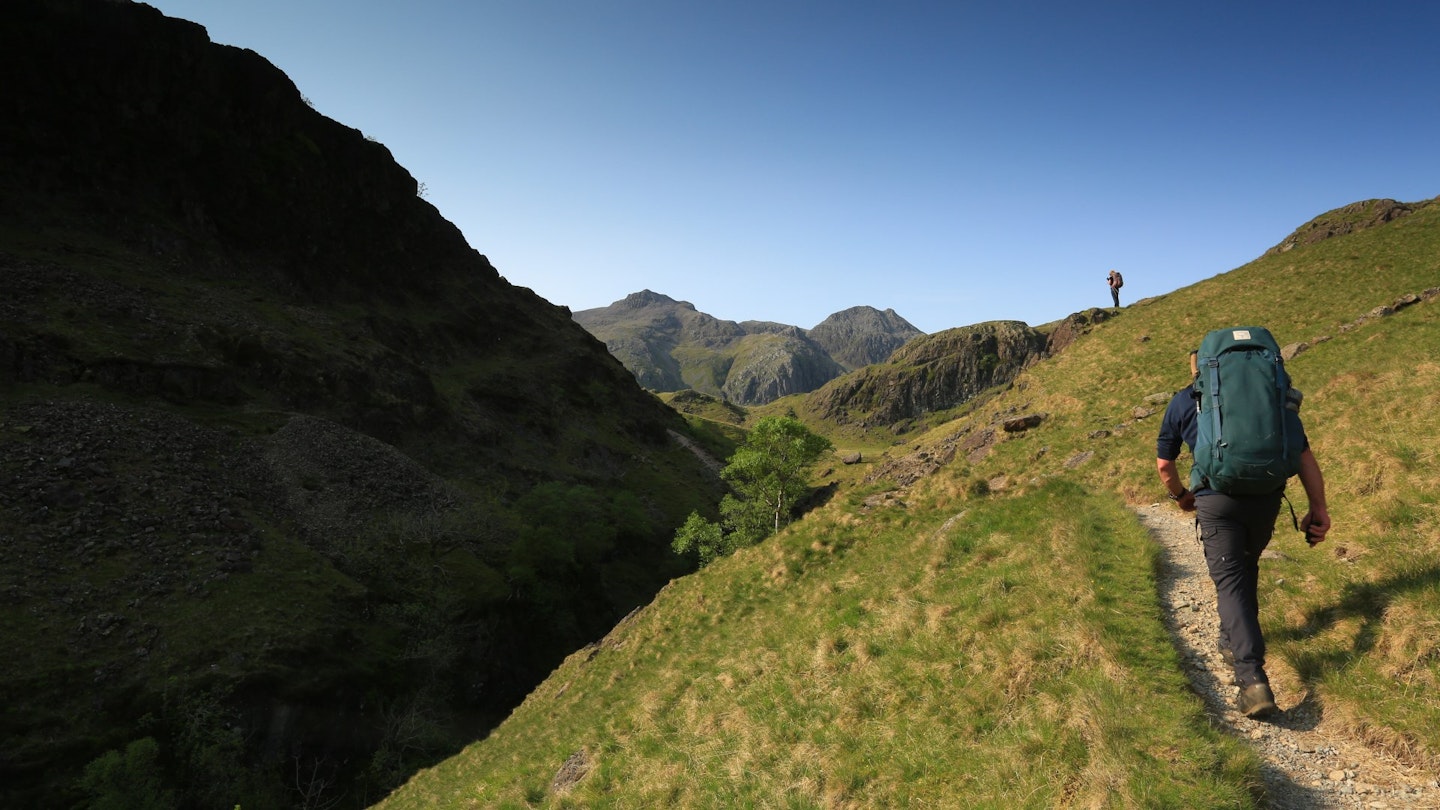
Arguably the finest approach to the range is via Upper Eskdale, a tranquil, remote and spectacular place that feels as if it belongs to the Scottish Highlands, so exquisite is its mountain scenery. The ascents onto the range from Great Moss, at the head of Eskdale, are rough and ready, ones for experienced hillwalkers looking for a challenge.
The 10 highest mountains in England

All of the tallest mountains in England are contained in the north of the country, mostly within Cumbria’s Lake District or the Northern Pennines.
There’s no universally accepted definition of a mountain in Britain. A peak that one person would think of as a mountain might be considered by another as merely the subsidiary top of a loftier mountain.
For example, it could be argued that the entire Helvellyn range is one great mountain and that the likes of Catstycam, White Side, Nethermost Pike, Dollywaggon Pike and the Dodds are merely its subsidiary high points, rather than separate mountains in their own right.
For this list, we’ve used the Nuttall definition, put forward by husband-and-wife duo John and Anne Nuttall in their The Mountains of England and Wales books. They define a mountain as “any summit of 2,000ft or more which rises above its surroundings on all sides by at least 50ft” or, in metric terms, 610m and 15m.
So, here we present the 10 highest mountains in England based on the Nuttall criteria. All of these peaks are located in the Lake District, with seven of the 10 found in the Southern Fells, home to the Scafells.
1. Scafell Pike, Southern Fells, Lake District
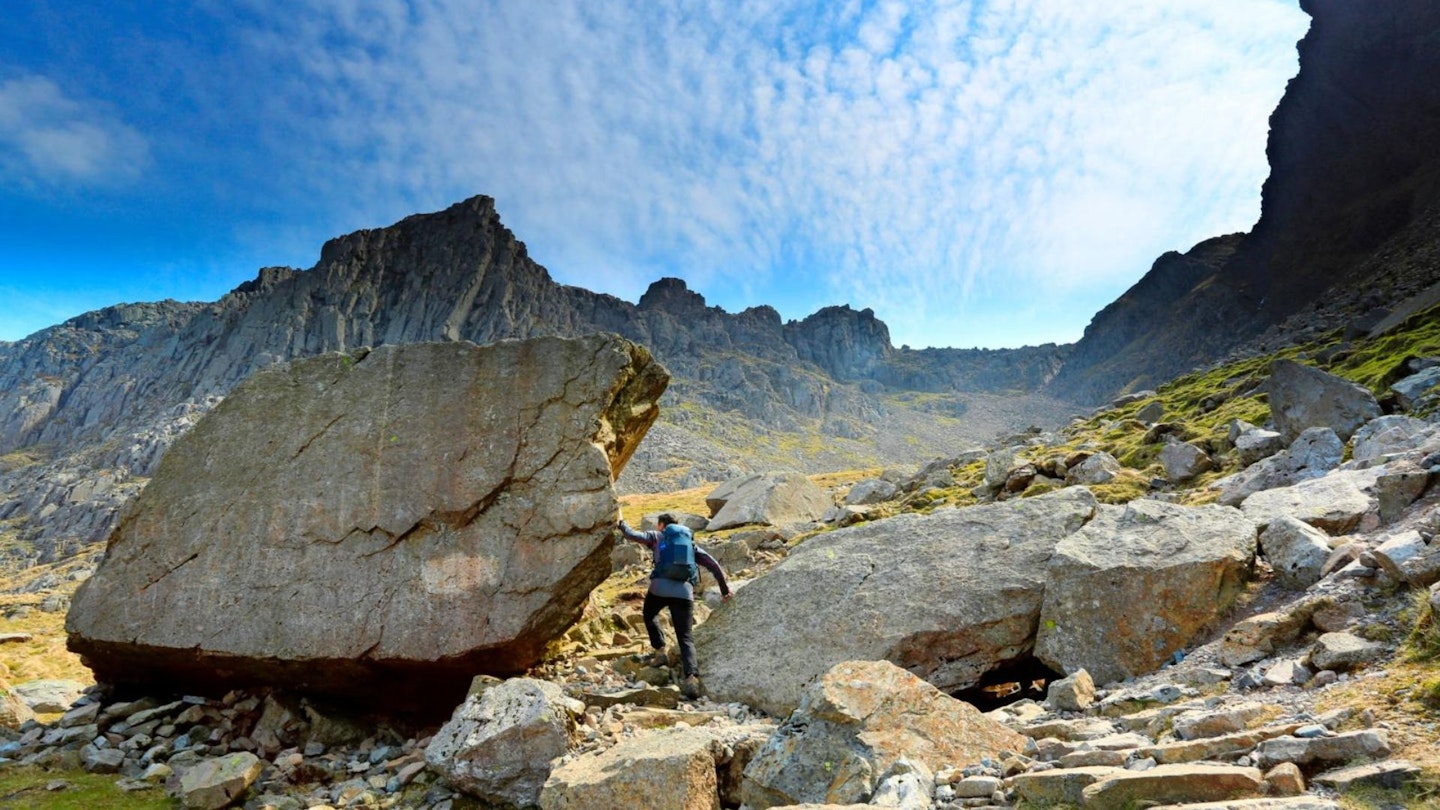
Height: 978m
The tallest mountain in England, Scafell Pike is the rugged, bouldery crown of the Scafell range. Its rocky architecture was once part of a great volcano, active around 400 million years ago, and subsequently shaped by the immense power of glacial erosion and countless freeze thaw cycles.
As you’d expect for England’s highest point, the views are exceptional, particularly to the north-west towards the giants of Great Gable and Pillar.
2. Sca Fell, Southern Fells, Lake District
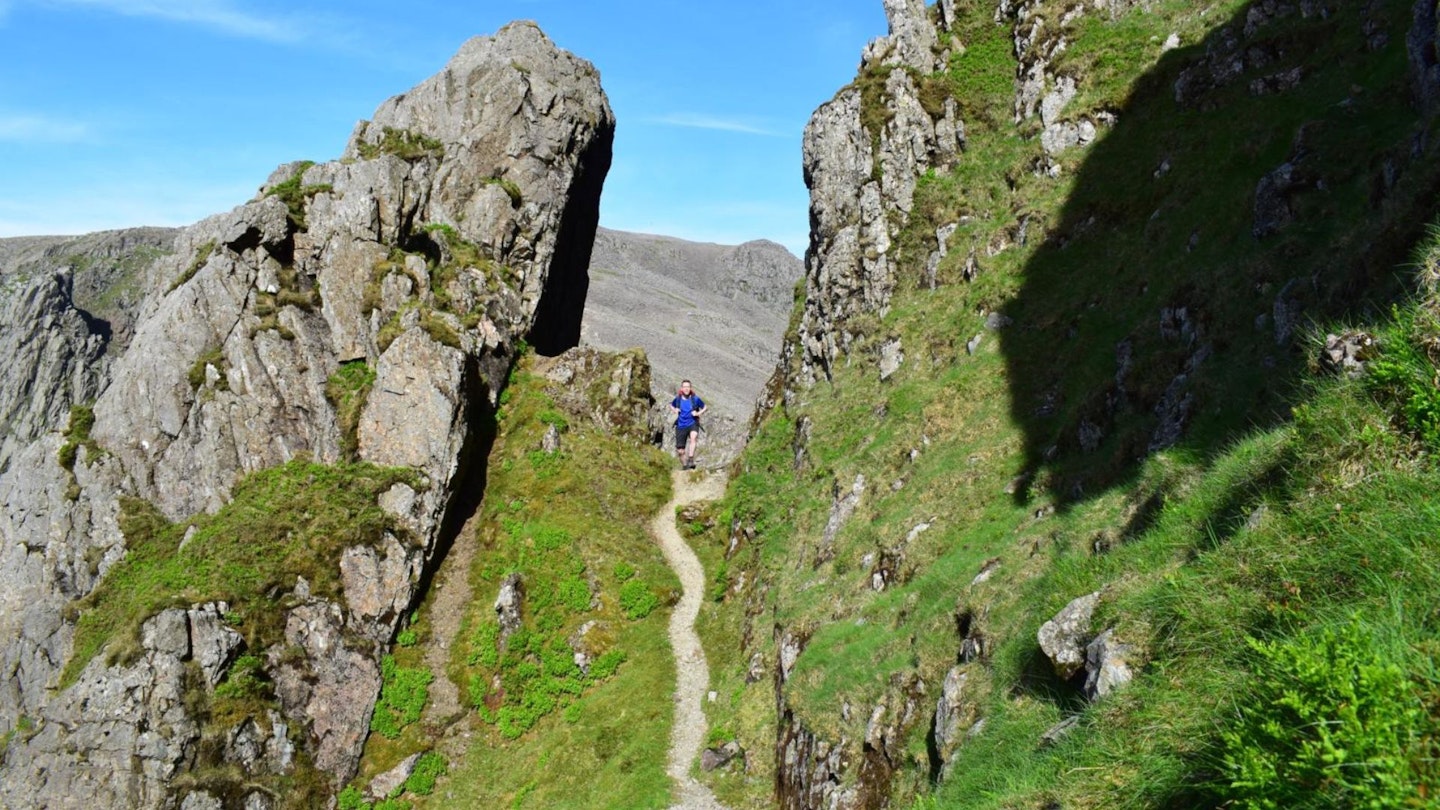
Height: 964m
Separated from its higher sibling by mighty crags, buttresses and the wild Mickledore ridge, Sca Fell is a majestic mountain.
From many angles, it looks both higher and more impressive than its illustrious neighbour, yet it falls short of the accolade of highest mountain in England by a mere 12m. Height’s not everything though, and Scafell has plenty to brag about.
Its cliffs are home to some of Lakeland’s most celebrated rock climbs and, in Lord’s Rake, it has one of the most adventurous and interesting hiking routes to any summit in the national park. As the crow (or raven, as it would be up here) flies, it’s not very far from the top of Scafell to the summit of Scafell Pike.
Yet Scafell’s east and north cliffs bar any easy journey linking the two, meaning anyone wanting to hike between England’s two highest points must take a lengthy detour either via Lord’s Rake to the north or Foxes Tarn to the east.
Read our full route description combining Scafell Pike and Scafell in an epic, yet challenging, day walk.
3. Symonds Knott, Southern Fells, Lake District
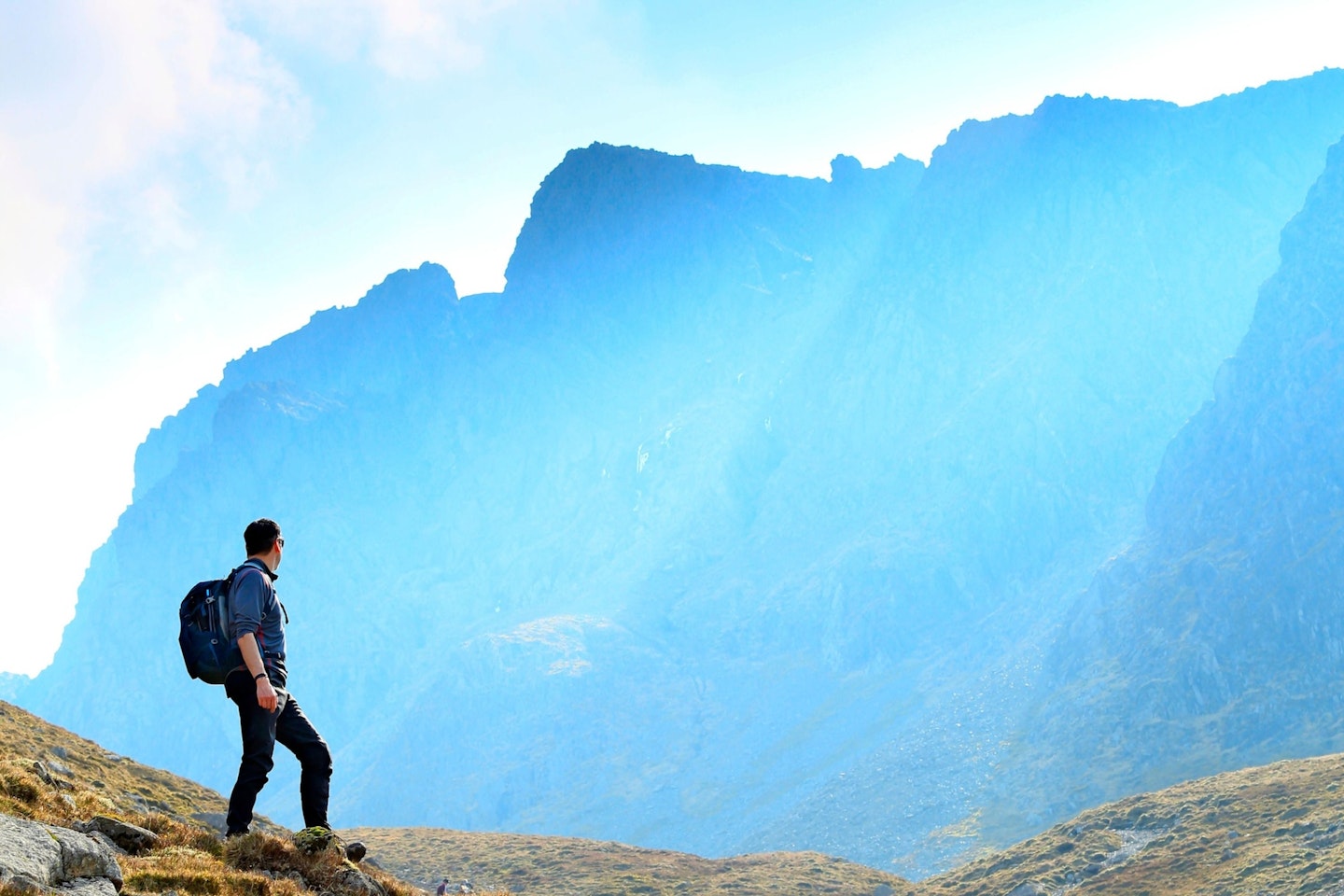
Height: 959m
For all of Scafell’s craggy drama, the main summit of the second tallest mountain in England sits slightly back, removed to the south of its fearsome buttresses, slabs and gullies.
Not so, Symonds Knott! This subsidiary top is a cairn-topped, rough pile of boulders perched right above the action, with the path taken by the exciting West Wall Traverse directly below.
From its apex, you can breathlessly admire the nearby towering Scafell Pinnacle and soak up the wider mountain panorama. The peak was named in honour of Rev HH Symonds, a guidebook writer and campaigner who played a pivotal role in the formation of the Lake District National Park in 1951.
4. Helvellyn, Eastern Fells, Lake District
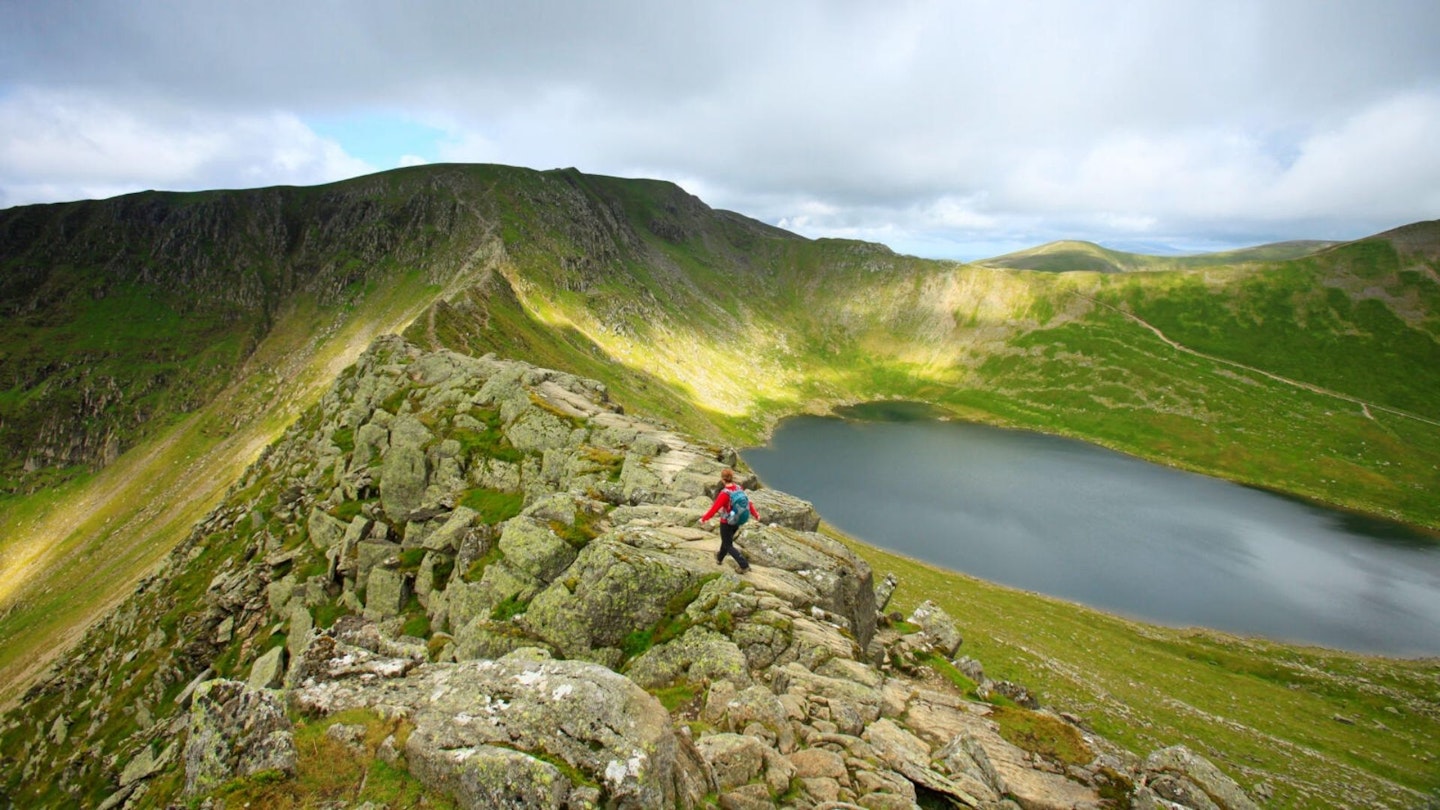
Height: 950m
A bona fide mountain celebrity, Helvellyn is undoubtedly one of England’s finest mountains and perhaps its most popular. Its summit is the high point of a mighty range that runs north to south, forming an immense barrier that separates the national park’s east and west.
The mountain’s most famous feature is the exciting arete of Striding Edge, a narrow, rocky ridge beloved by generations of hill goers.
Helvellyn’s northeast face, Striding Edge, and sister ridge Swirral Edge form the walls of a massive natural amphitheatre, a classic glacial U-valley. Cupped in this grand cove’s embrace is the jewel of Red Tarn, a lovely spot to admire Helvellyn’s fantastic mountain architecture.
5. Ill Crag, Southern Fells, Lake District

Height: 935m
Had Wainwright included Ill Crag in his Pictorial Guides, its summit would have been polished by thousands, if not millions, of boots over the years. Yet this dramatic high point, jutting out to the south from the Scafell range’s spine, is the preserve of only the most curious hillwalkers.
A rocky knob on the skyline high above remote Upper Eskdale, it certainly looks the part from the main path up onto the Scafells from Esk Hause.
From here, many newcomers to the region assume that it must be Scafell Pike, as it hides its parent from view. Seek it out: a detour to Ill Crag’s neglected summit is worth it for the view down Upper Eskdale alone.
6. Broad Crag, Southern Fells, Lake District
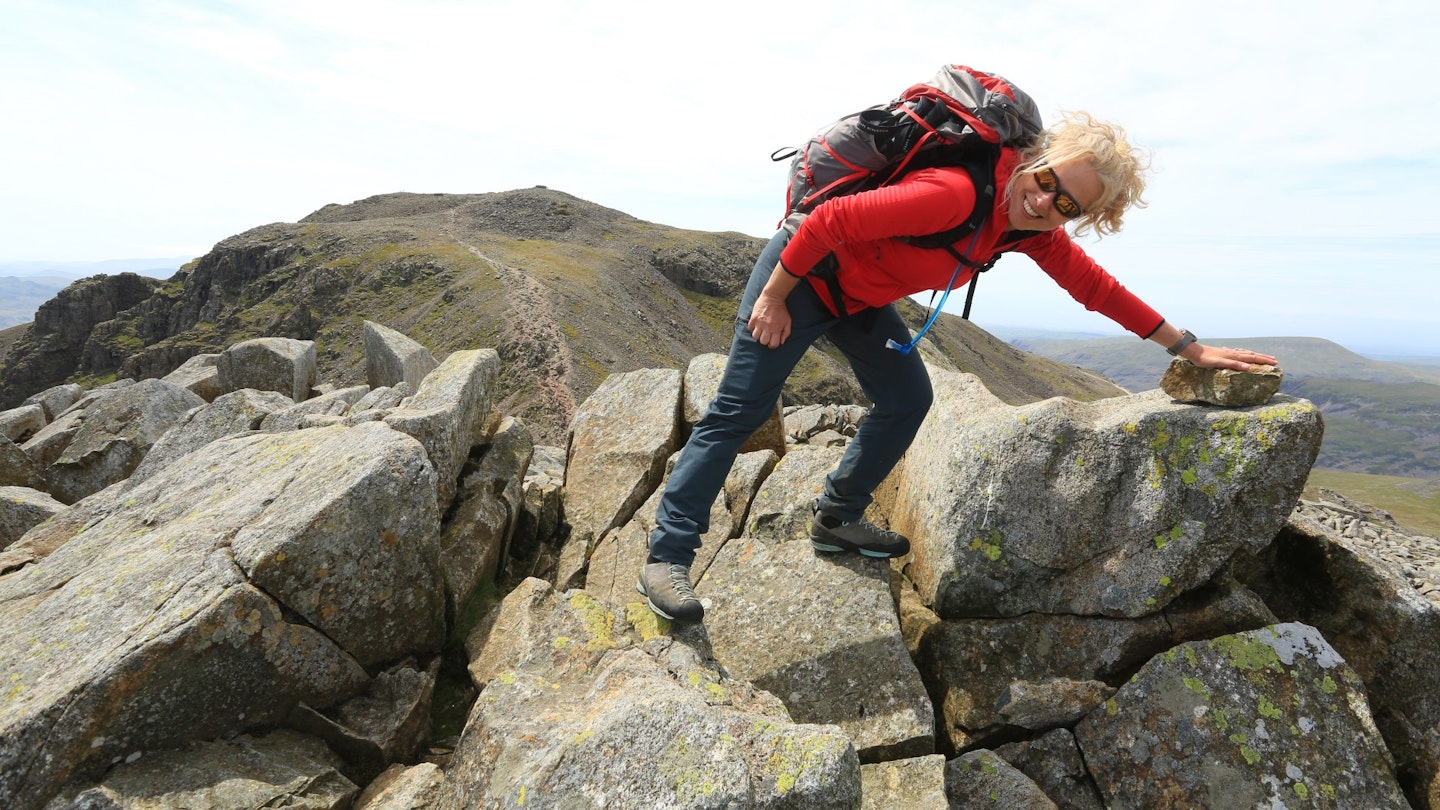
Height: 934m
As the one of the loftiest of the Pikes of Scafell, the rocky jumble of Broad Crag shares a similar fate to Ill Crag, broadly ignored in favour of its illustrious near neighbour.
The fact that its apex, which Wainwright cited as ‘the roughest summit in England’ is mere metres from one of the main routes to Scafell Pike only rubs salt in its wounds. Broad Crag watches on, while the masses boulder hop their way to the highest land in England.
7. Skiddaw, Northern Fells, Lake District
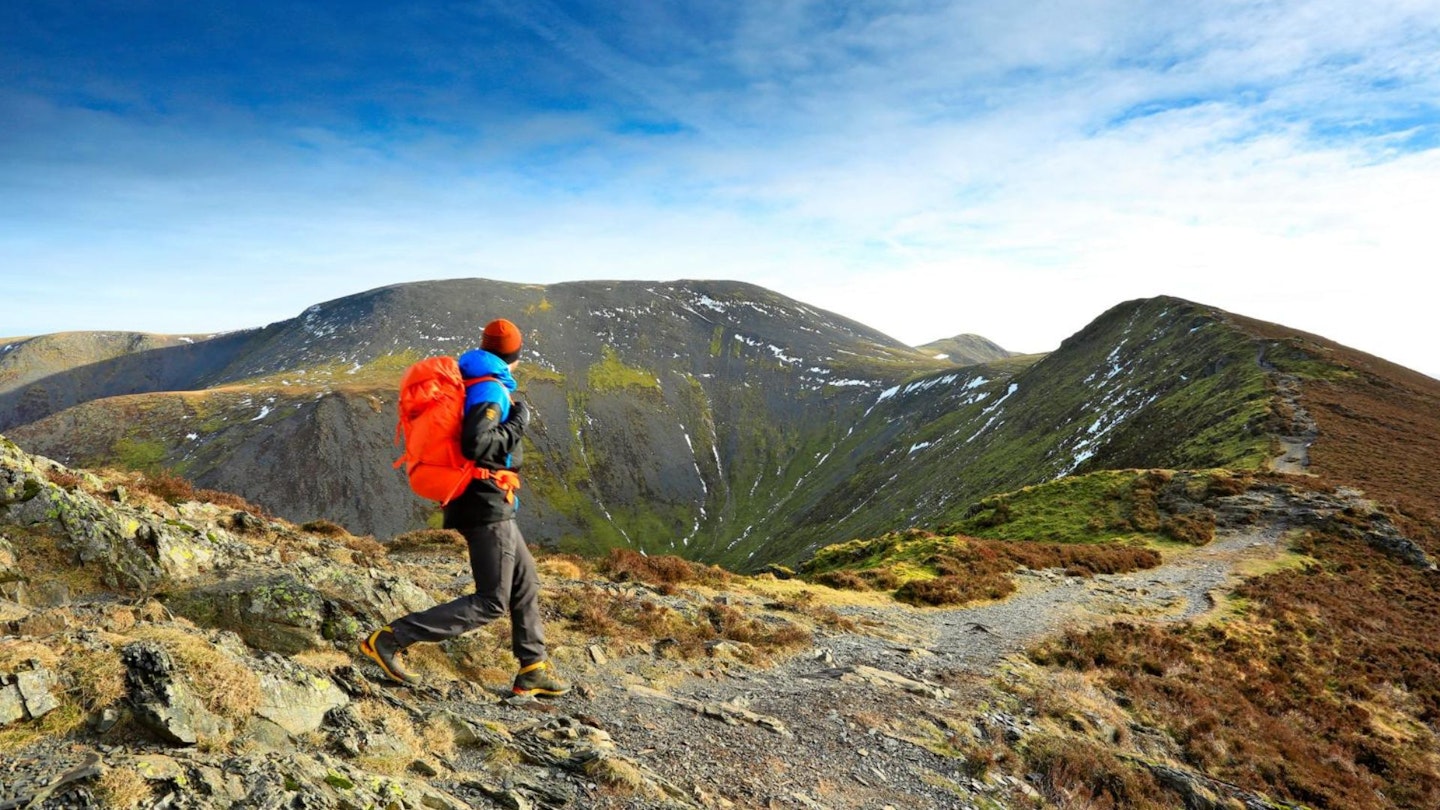
Height: 931m
Sorry Coniston, but Skiddaw is the true old man of Lakeland. The region’s most ancient mountain rises in rounded forms above its family of subservient fells, a distinguished sight in the national park’s lovely northern fells.
Its character is markedly different to the other peaks in the list, its gentle architecture the result of its Skiddaw Slate geology, as opposed to the Borrowdale Volcanics found in Lakeland’s craggier fells.
Unlike neighbouring Blencathra, the other superstar of the Northern Fells, Skiddaw contains little by way of scrambling interest. However, its western limb, the superb Long Side Edge, is a classic mountain ridge that provides a magnificent way up to Skiddaw’s noble summit.
8. Helvellyn Lower Man, Eastern Fells, Lake District
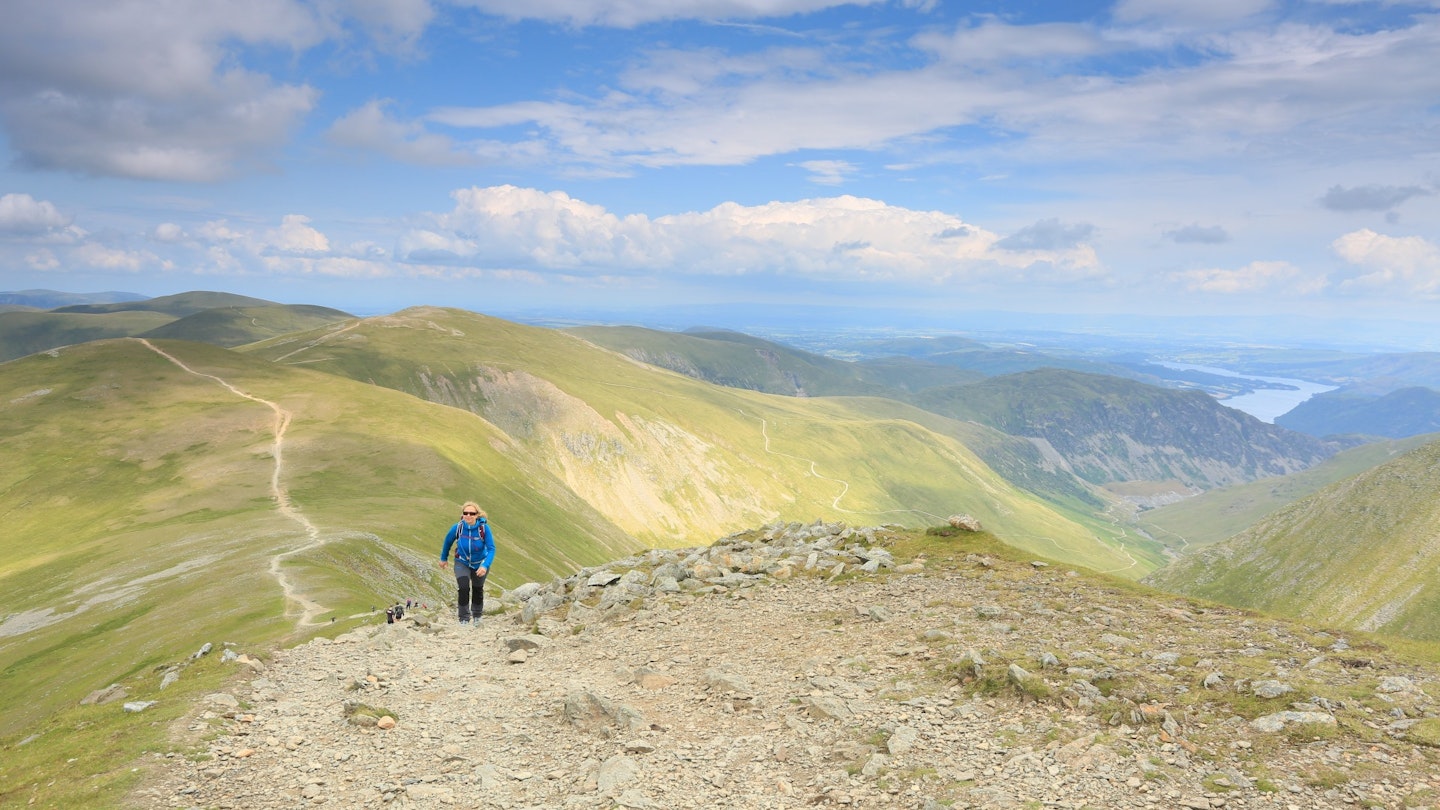
Height: 925m
Helvellyn Lower Man is the second highest top in the Helvellyn range, standing less than half a mile to the north-west of its parent summit.
It stands proud above the classically U-shaped valley of Brown Cove, at the point where the main spine of the range arcs north towards White Side, while the ridge above the dramatic Browncove Crags branches off to the north-west.
Gaze east to admire the shapely pyramid of Catstycam and west across the tumultuous heart of Lakeland’s mountain country – a marvellous sight.
9. Great End, Southern Fells, Lake District

Height: 910m
Great End rises proud as the craggy northern termination of the Scafell range and sees more visitors than neighbouring Ill Crag and Broad Crag because Wainwright was kind enough to include it in his famous Pictorial Guides.
The mountain’s greatest feature is its towering northeast face. The buttresses, crags and gullies here are an impressive and intimidating sight, as well as the scene of daring winter climbs, though they’re also prone to avalanche.
For hikers, the usual ways up are via Calf Cove from the great junction of paths at Esk Hause or from Sty Head via The Band, an adventurous route up the mountain’s northwest flank.
The views across the Scafells from the summit are spellbinding, as is the prospect to the northwest, where Great Gable looms large.
10. Bowfell, Southern Fells, Lake District
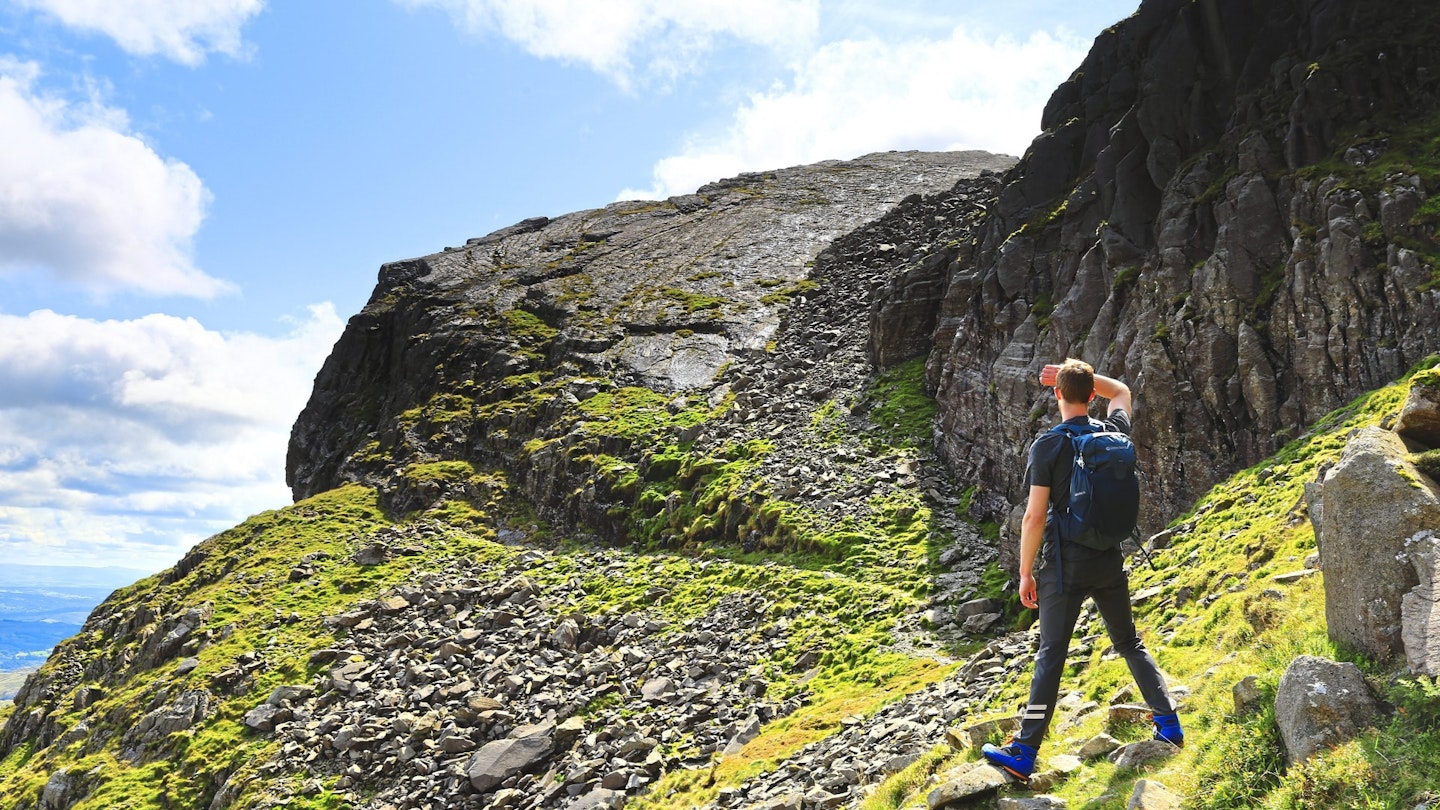
Height: 902m
Bowfell is a grand, rocky mountain that towers above the valleys of Eskdale and Langdale. A shapely pyramid visible from many vantage points across the national park, it rewards hikers with astonishing views towards the Scafell range.
The fell’s finest features are found on its steep, craggy, northeastern flanks where the dramatic Climber’s Traverse path takes you up close to geological masterpieces like Bowfell Buttress and the Great Slab.
About the author
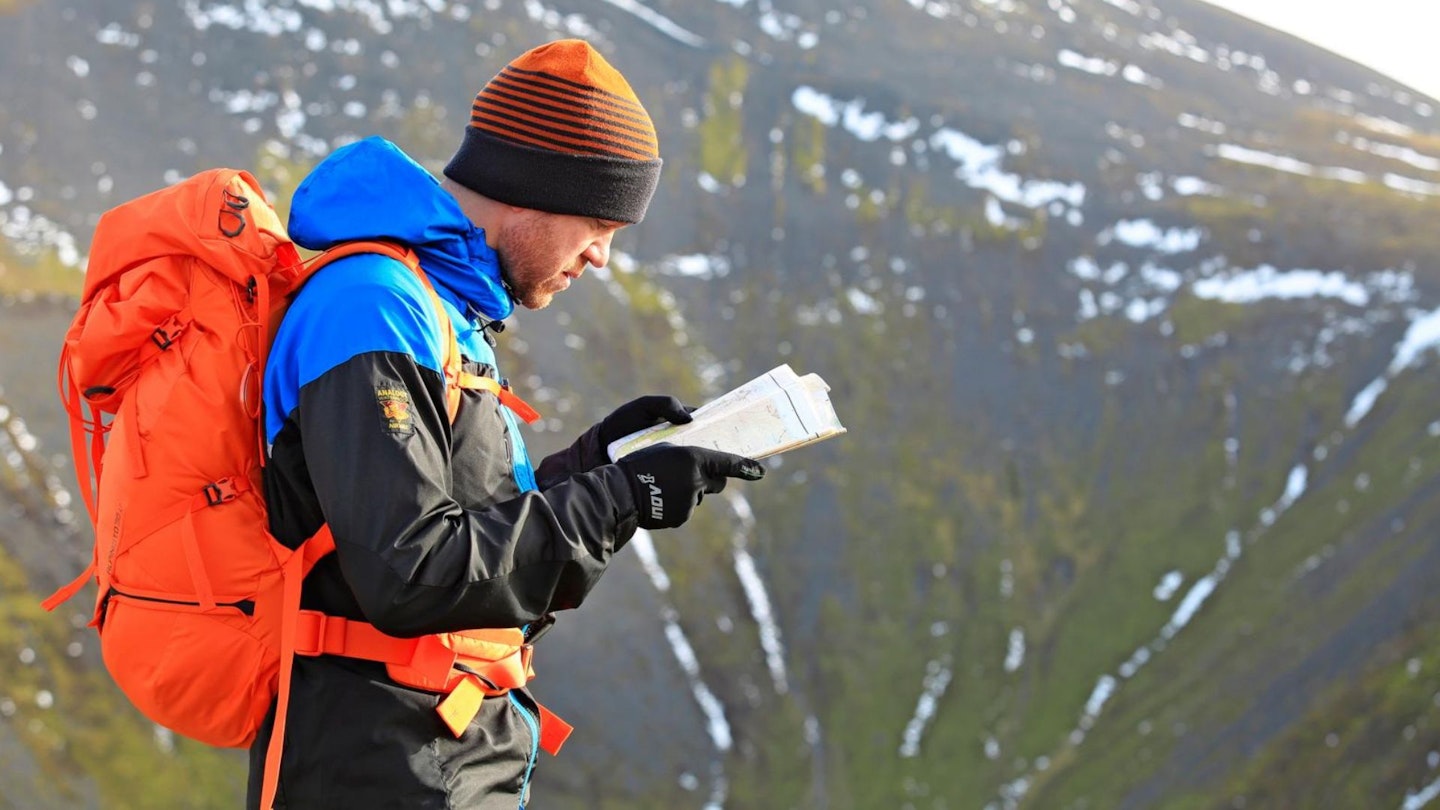
James Forrest is one of the UK's most experienced and knowledgeable outdoor writers. As well as being one of our primary freelance writers on LFTO and Trail Magazine, he is known for climbing all 1,001 mountains across the UK and Ireland in the fastest known time.
